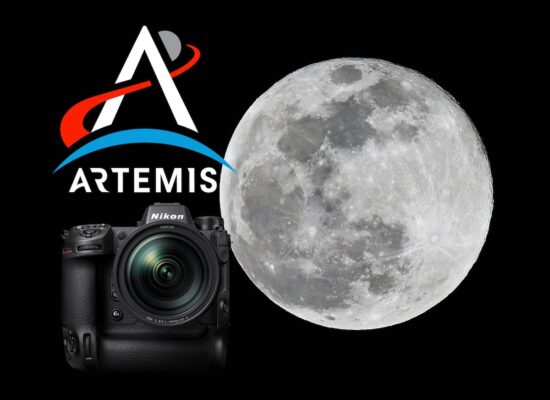
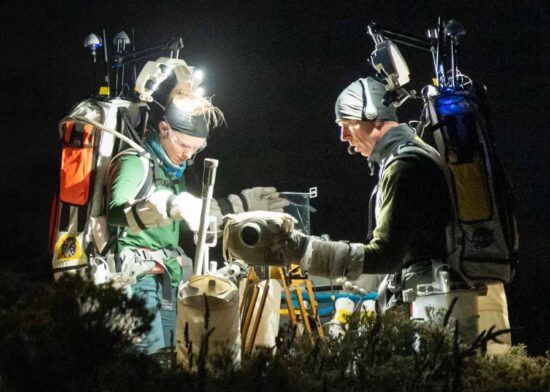

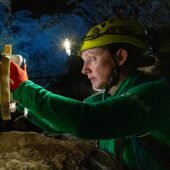
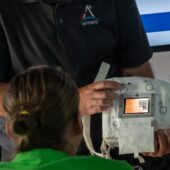
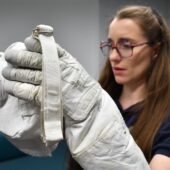
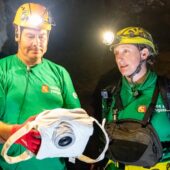
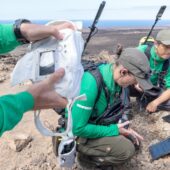
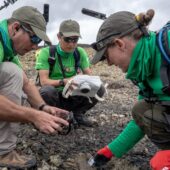
In addition to the ISS, the flagship Nikon Z9 camera is also going to the moon with the upcoming Artemis III mission – previously reported here:
Additional information:
MIRRORLESS GOES TO THE MOON: NIKON ENTERS INTO SPACE ACT AGREEMENT WITH NASA FOR ARTEMIS MISSION SUPPORT WITH THE NIKON Z 9 CAMERA
Nikon and NASA Collaborating on Handheld Camera Development
MELVILLE, NY –Nikon Inc. has entered into a Space Act agreement with the National Aeronautics and Space Administration (NASA) to support the agency’s Artemis campaign with the Handheld Universal Lunar Camera (HULC) development. The Nikon Z 9, Nikon’s mirrorless full-frame flagship, as implemented in the HULC system, will be the handheld camera for the upcoming Artemis III mission which will be used by the crew returning to the surface of the Moon.
The Artemis campaign is an ambitious and important undertaking for humanity. Artemis will return us to the Moon in order to establish a foundation for long-term scientific lunar research and exploration, eventually leading as a passageway for travel to Mars. Since humankind’s first forays into space, handheld cameras have been used to document the journey, sending back iconic imagery and for research. This Space Act Agreement is a collaboration between NASA and Nikon Inc. to ensure the current state-of-the-art full-frame camera can survive lunar environments while developing an efficient and optimal platform for image and video capture for the mission.
“The opportunity to collaborate with NASA on this endeavor is simply exhilarating yet humbling, as we realize the benefits of this mission have the potential to affect all of mankind in the future,” said Naoki Onozato, President and CEO, Nikon Inc. “As one of the many suppliers and manufacturers collaborating with NASA as part of the Space Act, our aim is to best equip the crew as they bravely bring humanity back to the surface of the Moon, and possibly beyond.”
The Artemis III mission is scheduled to launch NASA’s SLS (Space Launch System) rocket with the agency’s Orion spacecraft in September 2026. The crew’s historic expedition will be the first human landing on the lunar surface since 1972, and this mission will also mark the first time a woman will walk on the Moon. During this 30-day mission, the crew will enter lunar orbit, after which two astronauts will land on the lunar surface in the lunar module (SpaceX’s Starship Human Landing System). After spending approximately seven days on the lunar surface conducting research and multiple Moonwalks, they will return to the Orion spacecraft to join the other two crew members and return to Earth. To help capture imagery, the mission has the need for a common camera platform to reduce overall mass and development efforts while simplifying training and increasing efficiency.
About the Modified Cameras
The Moon surface and lunar environment is a harsh and unforgiving vacuum, which poses multiple technological and engineering challenges. The surface is subject to massive temperature swings, with constant bombardment of cosmic radiation that can damage electrical components. Nikon’s engineers are working closely with NASA to develop solutions to maximize reliability when operating under this kind of extreme environment, including the redesign of various circuits and control sequences within the camera to withstand the vast amounts of radiation. Support will also be given for thermal vacuum testing, running various tests and simulations to help ensure that the camera maintains operational status when 238,000 miles away from Earth.
Additionally, the camera will need to be used by astronauts during extravehicular activities (EVAs), which are instances when the crew will be in space or on Moonwalks. In order for astronauts to comfortably and easily use the Z 9 when wearing the thick gloves of a spacesuit, a custom grip is being developed by NASA, which includes common controls such as a shutter release, playback, still/video capture switching and more. This grip will connect to the camera via the 10-pin terminal, which will be usable with specialized custom firmware created for the cameras. To protect the camera, lens and housing during EVA, a special “thermal blanket” will be created by NASA, which is similar to those currently used during exterior spacewalks by International Space Station astronauts. A selection of NIKKOR Z lenses will also be used for the mission, and those that will be actively used on the Moon will be modified to withstand the harsh lunar environment.
Like the cameras used by the Space Station crew, the firmware will also be specially modified for this mission. These modifications include accounting for the different circuitry, expanding noise reduction to lower shutter speeds to account for the effects of constant bombardment of cosmic radiation that the crew and gear encounter. Additional changes have been made to the file naming sequence, as well as default settings and controls that are optimized for exterior missions. Changes have also been made to the in-camera communication control to simplify the astronaut’s workflow. Additional modifications include shutter shield optimization, enhanced HDR functionality and modified default settings for menu items.
Chronicling History Together
Nikon cameras have been used by NASA and space agencies extensively, most recently with the arrival of unmodified Z 9 camera to the crew of the International Space Station. Since the Apollo 15 mission more than 50 years ago, Nikon cameras and lenses have been used by NASA for space exploration. Starting in 1999, Nikon cameras (Nikon F5) and NIKKOR lenses have been used aboard the ISS to aid in scientific research, maintenance and aiding astronauts capturing iconic images of the Earth, the heavens and beyond.
See this article for additional information.
Previous Nikon/NASA posts can be found here:
Nikon Z9 goes to space: new Nikon cameras and Nikkor lenses aboard the space station
Nikon cameras in space (a history of cameras in space video)
New Nikon in space video, search NASA’s photo archive and more
Nikon lens spotted in the historic SpaceX DM-2 launch and docking







